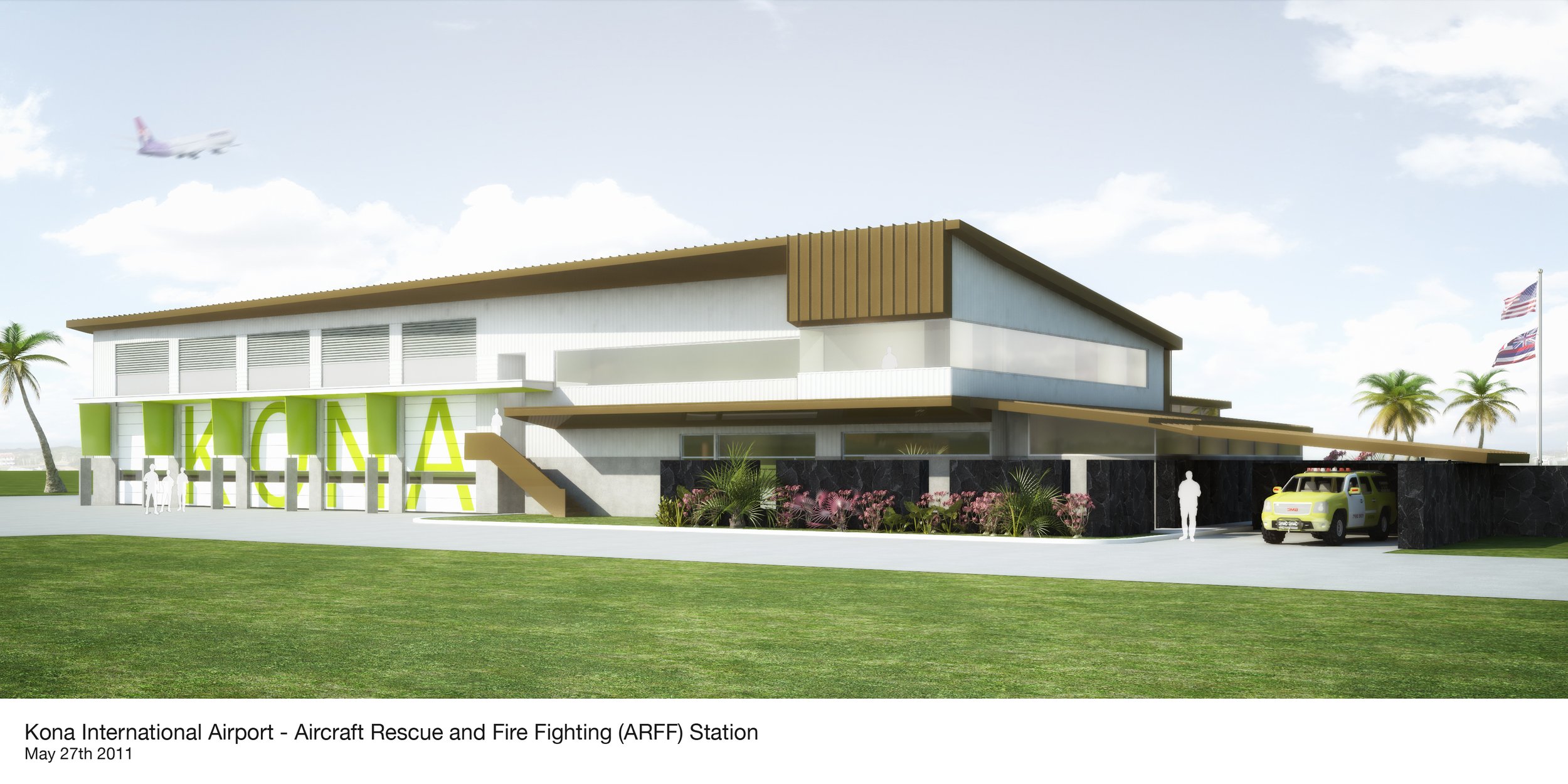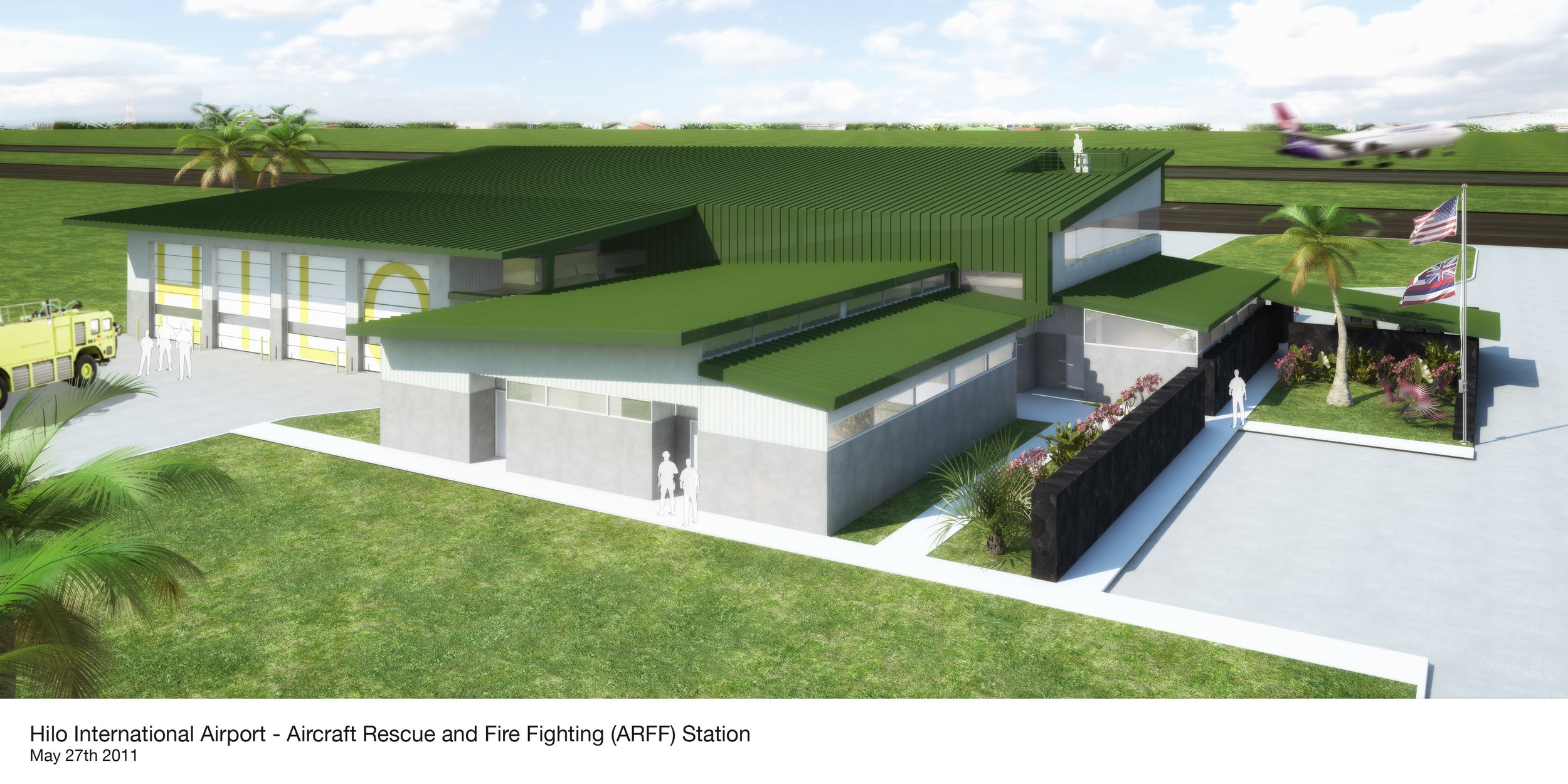Kona International Airport ARFF Station
Hilo International Airport ARFF Station
In 2011, K+A was commissioned to design the referenced ARFF facilities in Hawaii. The Kona ARFF was programmed with the Hilo program closely following with site-specific modifications for Hilo. The assignment included reviewing existing facilities, confirming proposed sites for conformance with FAA Advisory response time of three minutes to center point of the farthest runway, and programming the proposed facilities to meet FAA requirements. Open dialogue with the user groups, Hawaiian DOT Airport division oversight, site selection, visioning, benchmarking and intensive programming workshops resulted in a program of spaces. Kona International Airport is an FAA assigned ARFF Index D with the potential of becoming an Index E in the near future. Although water rescue was not currently facilitated, this emergency service is an element of the future emergency response planning discussions. The mission of the Kona ARFF is to respond swiftly to hazard mitigation, evacuation, and possible rescue of passengers and crew of an aircraft involved in an airport ground emergency at Kona International Airport. The Kona ARFF is very unique in its duty to respond to an event anywhere on airport property. The surrounding undeveloped areas consist of lava fields with very difficult terrain to negotiate. This project included fire fighting vehicle space, fire equipment storage, emergency medical services storage, hazardous material decontamination, and an airport emergency command center. In addition, it provided administration areas, living and training accommodations for fire fighters who use the facility. It was a requirement of the projects that FAA Advisory Circular No. 150/5210-15A Aircraft Rescue and Firefighting Station Building Design information, references and guidelines be followed. The program was modeled to accommodate proposed ARFF functions, including drive through apparatus bays sufficient for fire fighting vehicles and fire fighting trailers, hazmat response, modernized operations, modernized crew areas, redundant emergency operations center function, equipment storage, and full visibility to runways and taxiways from watch rooms. Staff offices, individual sleeping quarters, training rooms, and other support functions supported each of the major components. The KOA ARFF station is located at a site south of the new airport traffic control tower. Site features include ease of apparatus serviceability of firefighting agents and refueling, and allowed for future growth of the building. The total project budgets were $15,000,000 for Kona and $9,500,000 for Hilo. Kona’s ARFF site was located on a difficult site of an existing lava flow field. Hilo had significantly less site development costs. Services included Programming, Schematic Design and Peer Review of Contract Documents.


